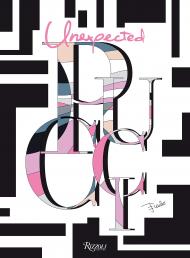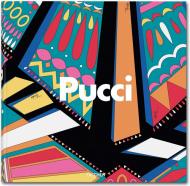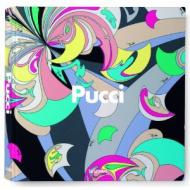A book for fashion and design lovers detailing Emilio Pucci's creativity beyond fashion, expressed through his interior design projects, rugs, and porcelain.
The brightly colored printed fabrics that twist around in a kaleidoscope created by Emilio Pucci recount an important period of Italian fashion history dating back to the 1960s.
This volume celebrates Emilio Pucci's creativity, which he expressed through his interior design projects, rugs, and porcelain, as well as in his fashion. Pucci's patterns and designs have been used in collaboration with other brands to create designer and collector objects.
Emilio Pucci focused on the creation of rugs that were presented in 1970 at the Museo Nacional de Arte Decorativo in Buenos Aires. The production of exclusive rugs continues upon the request of selected clients, whose houses have been photographed for the book. Currently, Pucci collaborates with Cappellini, Kartell, Bisazza, Illy, and many others on their interior design projects.eation of rugs that were presented at the Museo Nacional de Arte Decorativo in Buenos Aires. The production of exclusive rugs continues upon the request of selected clients, whose houses have been photographed for the book. Currently, Pucci collaborates with Cappellini, Kartell, Bisazza, Illy, and many others on their interior design projects.
About the Author:
Laudomia Pucci graduated in business and economics at LUISS University in Rome. After the death of her father,
Emilio Pucci, in 1992, she became head of the Emilio Pucci company. Suzy Menkes is a British journalist and fashion critic. Angelo Flaccavento is a contributing editor to the Business of Fashion. Piero Lissoni is one of Italy's leading Italian architects and designers, known for his contemporary furniture design.


